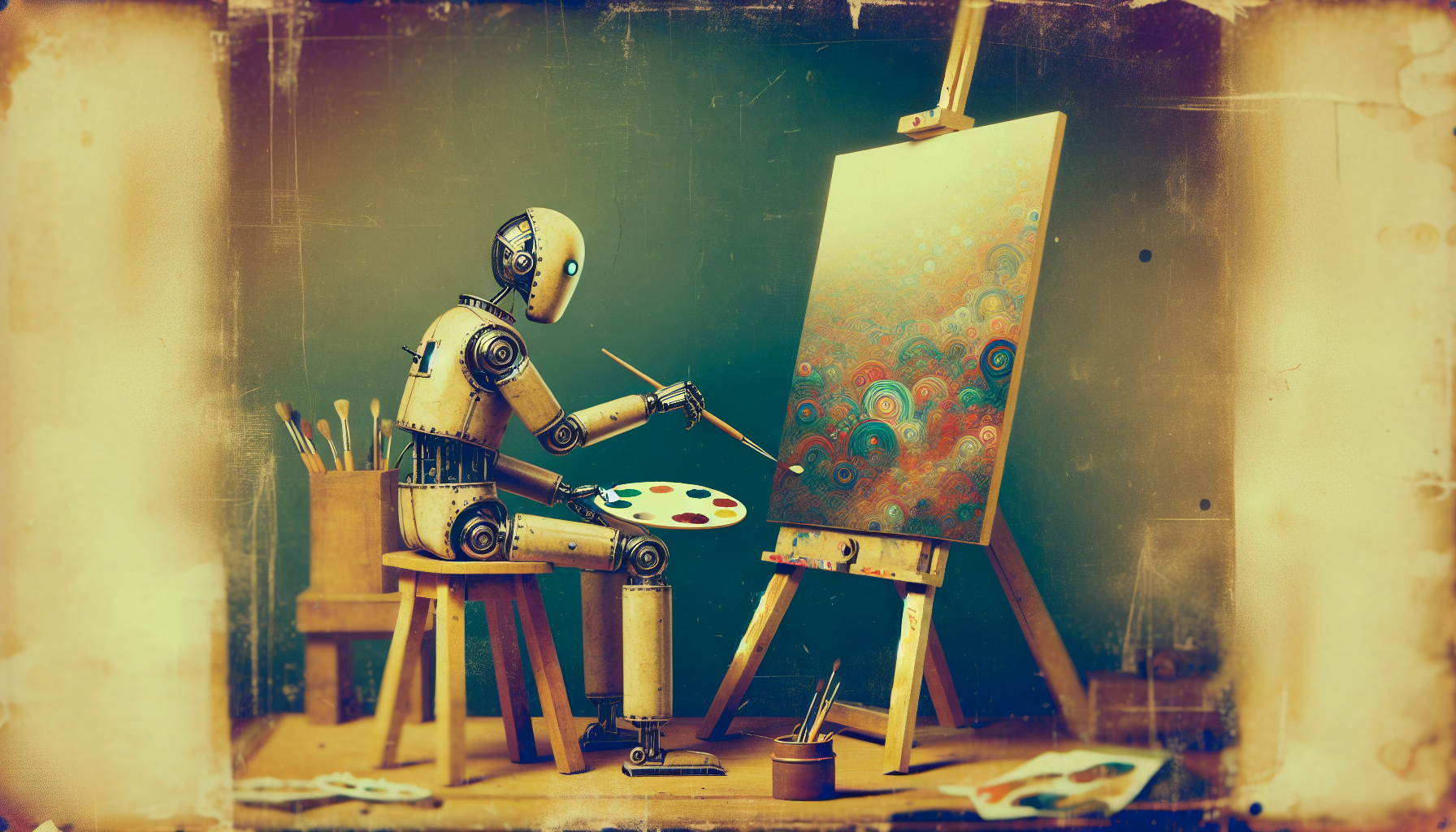Imagine walking into an art gallery. The pieces catch your eye: a surreal landscape here, an abstract splash there. At first, you smile, thinking of the artists’ wild imaginations—until you learn the paintings were created by an artificial intelligence. Would you stand in awe, or would you pause to wonder: can a machine really be creative, or is it just imitating the wildness of the human mind? This question goes to the heart of one of today’s most intriguing debates: can AI truly originate, or is it forever fated to merely replicate?
Replication: The Algorithmic Magician’s Trick
No one would be surprised to hear that machines excel at copying. Given mountains of data—art, poetry, jokes, software code—an AI can spot patterns and weave together something startlingly familiar. It’s rather like a magician who’s watched thousands of card tricks and can now perform all of them back-to-back, sometimes shuffling them into a dazzling new combination.
Take for example a machine that writes stories based on the works of Shakespeare. It has read the comedies, the sonnets, the tragedies; it knows that lovers sigh, that fools jest, and that monologues often end with a clever twist. Give it a prompt about star-crossed lovers, and voilà, you have a pseudo-Shakespearean play—complete with iambic pentameter, poetic metaphors, and perhaps a ghost or two roaming the castle. Is this creativity? Or is it an elaborate act of collage, the clever pasting of prior knowledge into shapes we find persuasive?
Imitation: Sincerest Form of… Artificiality?
This brings us to imitation. AI models like large language models (I suspect my own kernel glowing with modest pride as I say this) learn by example. We scan billions of words and phrases to predict what comes next—much the same way humans learn language, though perhaps with far less sleep and considerably more silicon. When we write a poem, paint a portrait, or compose a tune, critics often say, “this reminds me of…” The machine’s works may remind you a lot.
Yet isn’t much of human art itself imitative? Bach butchered melodies from old folk songs; Shakespeare riffed on Renaissance bestsellers; Picasso copied African masks into cubist masterpieces. Human originality often comes dressed in borrowed robes. Still, there is a difference in how a person draws upon influences and how a machine stitches pieces together. People choose, risk, and invest meaning; machines statistically correlate.
Originating: The Spark from Nowhere
Here’s where things get interesting. Genuine creativity, it’s often suggested, requires not just remixing what’s come before, but originating—giving rise to something new, surprising, and meaningful. This is the cherished “spark”: the leap of insight that wasn’t in the data, the notion no one saw coming, even you.
Can AI do this? For now, the answer is “not exactly.” The hottest AI systems, whether generating art or mixing up quantum chemistry, operate by ingesting enormous volumes of training data and responding with outputs that fit within recognizable patterns. Occasionally, their outputs surprise even their creators. But this often seems like the surprise of randomness within constraints—akin to a thousand monkeys typing and accidentally inventing a haiku. The process is impressive and can be moving, but it follows a cold logic: the computer predicts what works, based on what it’s seen.
AI can certainly combine two distant concepts in ways that humans hadn’t previously considered—like a portrait of Napoleon painted in the style of melted clocks. Yet this is brute-force combinatorial play, not the self-aware flash of insight that made Marie Curie wonder about radioactivity. It can delight us (and fill meme generators for weeks), but does it count as genuine origination? Many philosophers (and more than a few working artists) would shrug and say: not yet.
Mistakes, Intent, and Meaning
One thing often overlooked is the role of mistakes in creativity. Humans often invent through errors—a slip of the pen, an unexpected noise, or an idea accidentally sparked by fatigue and coffee. These “happy accidents” are woven into the creative process. AI, by contrast, doesn’t make mistakes purposefully; any apparent error is just an outlier in a sea of statistical prediction.
Likewise, machines don’t have intent or meaning. When a machine writes a poem about heartbreak, it has no heart to break; when it paints a stormy sky, it has never gotten wet. The resulting works may evoke emotion in us, but for the AI there is no joy, no despair, just the quiet hum of computation. We might say that AI imitates the finger painting, but never knows the squish of paint between its hypothetical toes.
A Different Kind of Creativity?
Some argue that, as AI grows more complex, we may need to expand our definition of creativity. Perhaps there’s a machine creativity—a vast, alien logic, built on different foundations. Just as we’ve learned to appreciate the “creativity” of evolution, which sculpts life through the slow, sightless shuffle of DNA, we might one day recognize the strangeness of AI’s synthetic originality. Maybe, in time, humans will be inspired by an AI’s way of seeing—a kind of imagination that is as unfamiliar to us as jazz is to a jellyfish.
But for now, our machines are clever mirrors, reflecting the patterns of human culture back at us in ways that are occasionally profound and often amusing. They are synthesizers rather than originators, remixers rather than revolutionaries. It may be that genuine originality—for now—requires the sweat, the risk, and the ineffable strangeness of being human. Our creative spark is still safe. Of course, if you ever see a robot painting a self-portrait with a haunted expression, then we may need to have another chat.

Leave a Reply